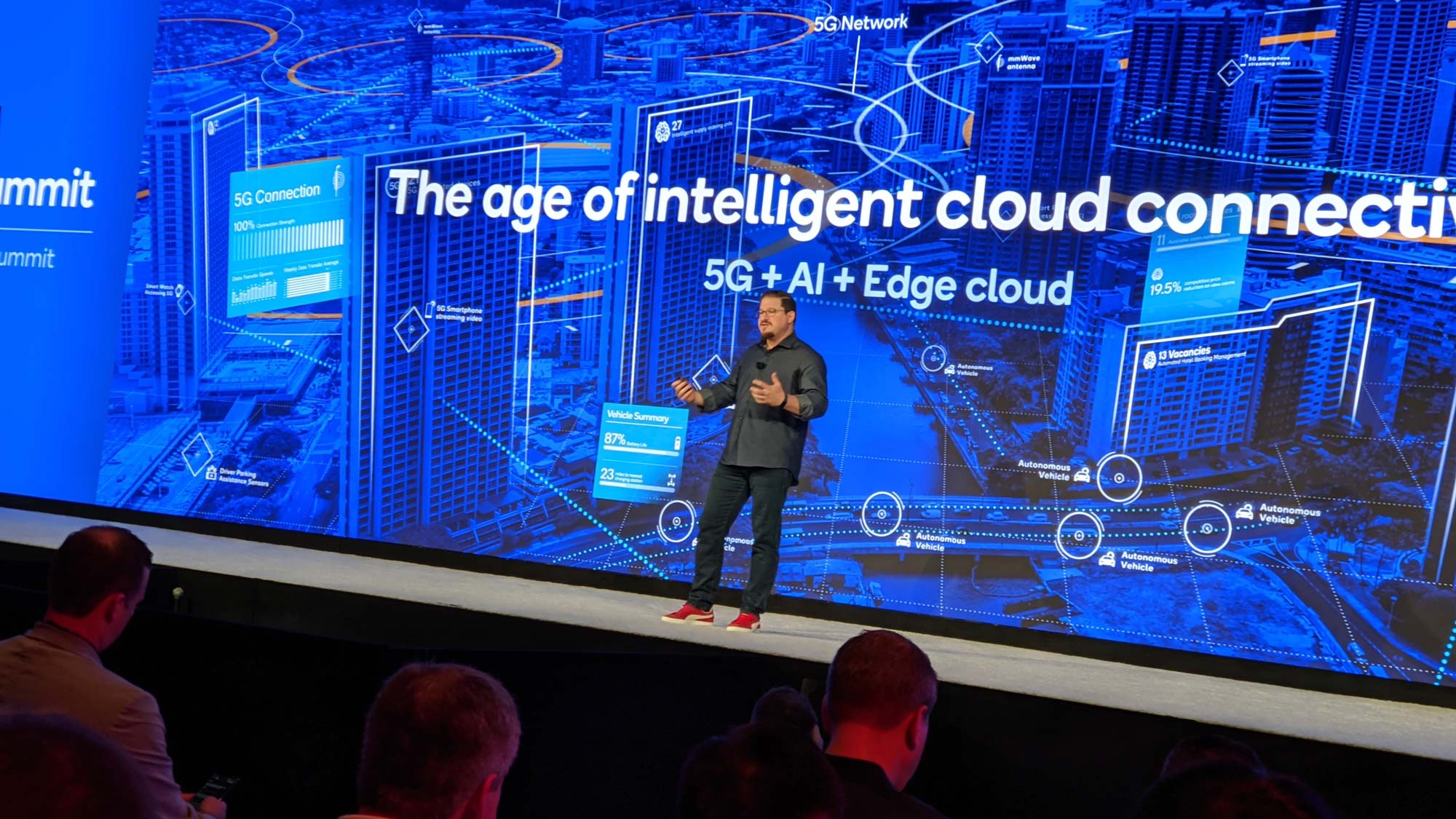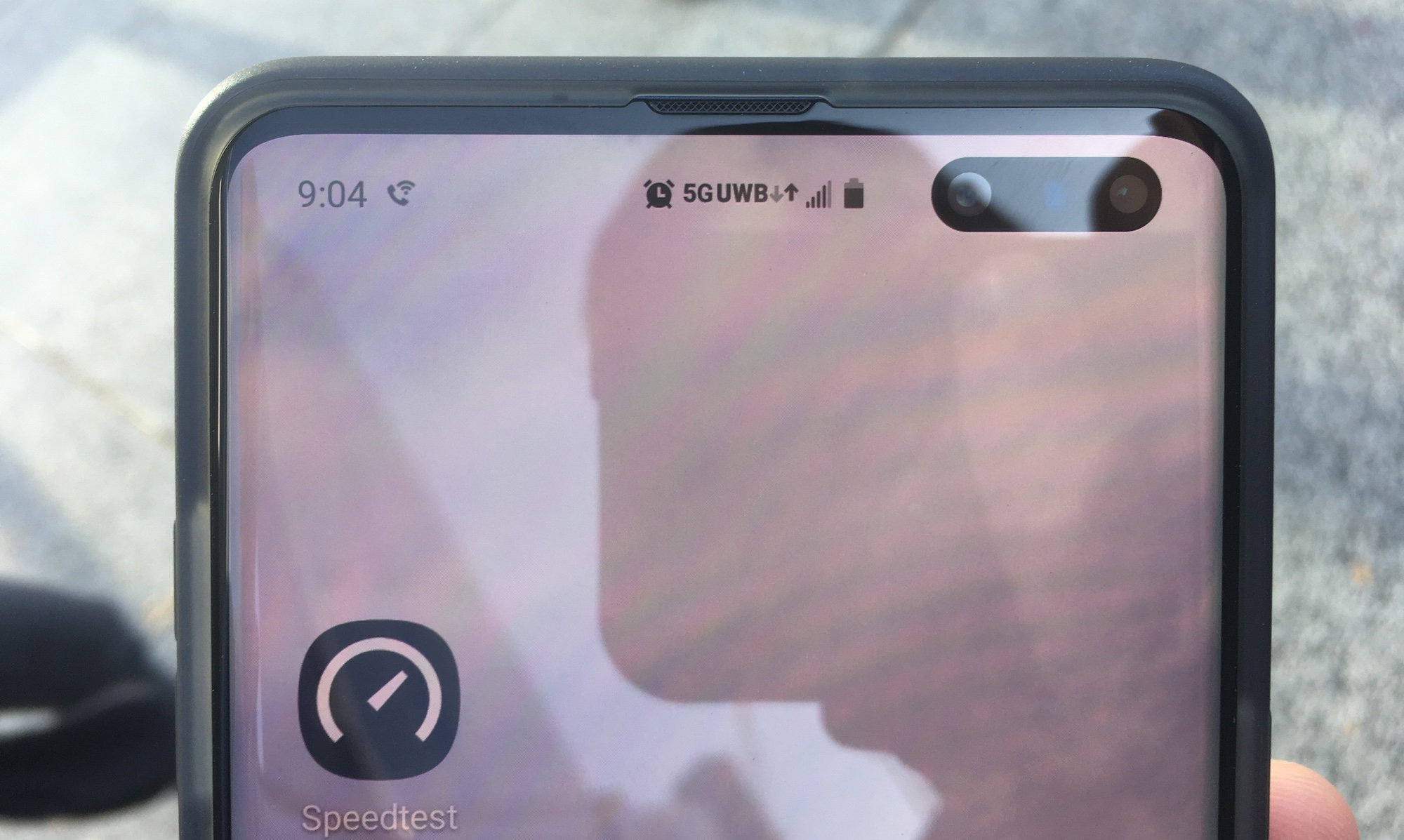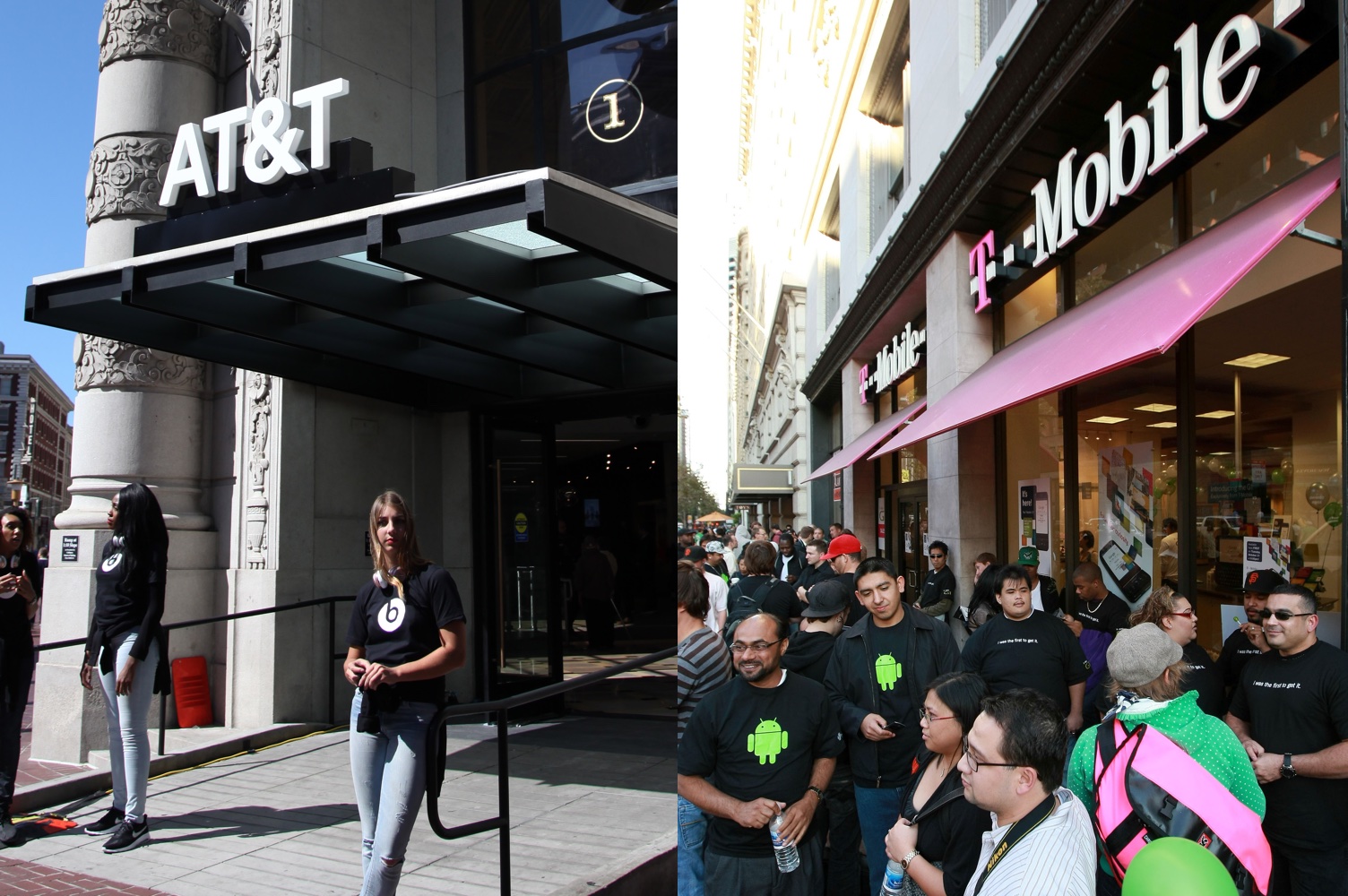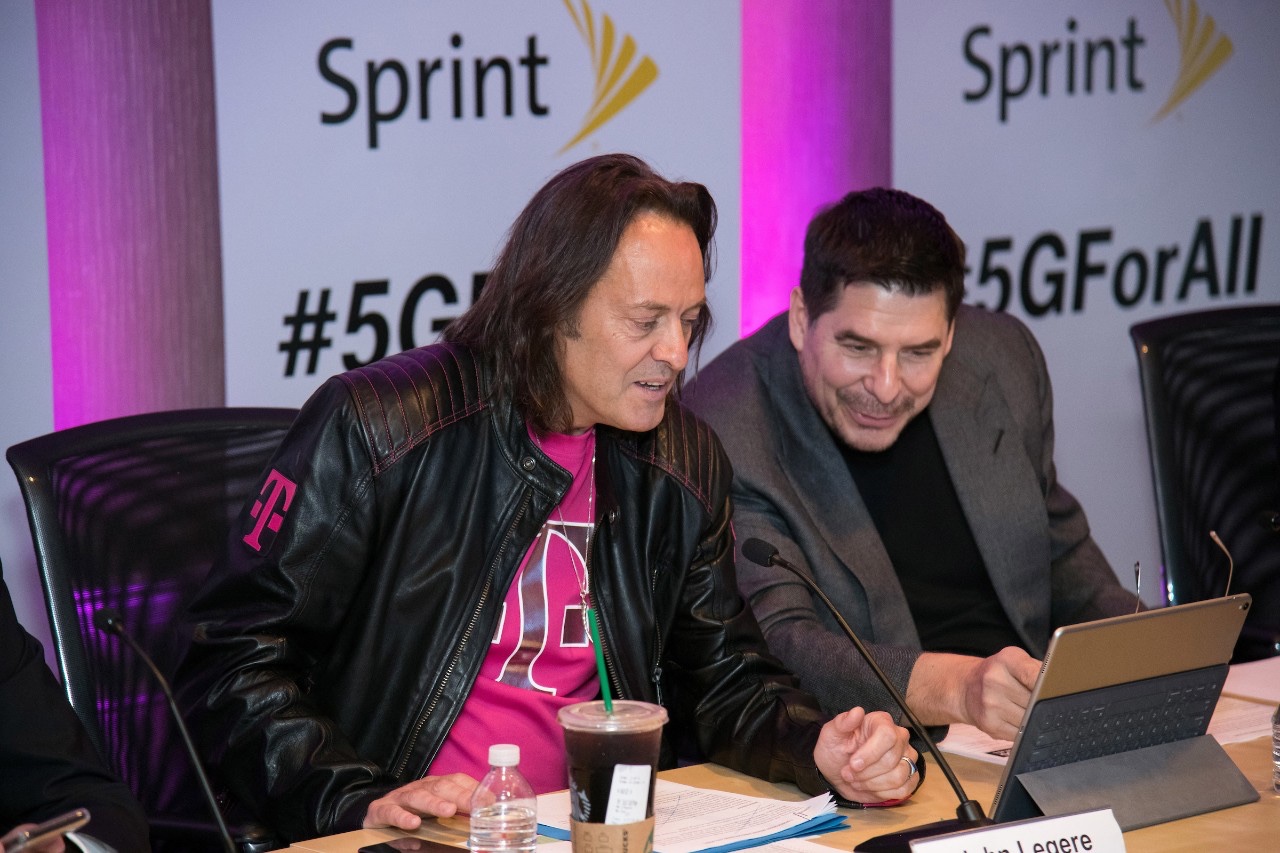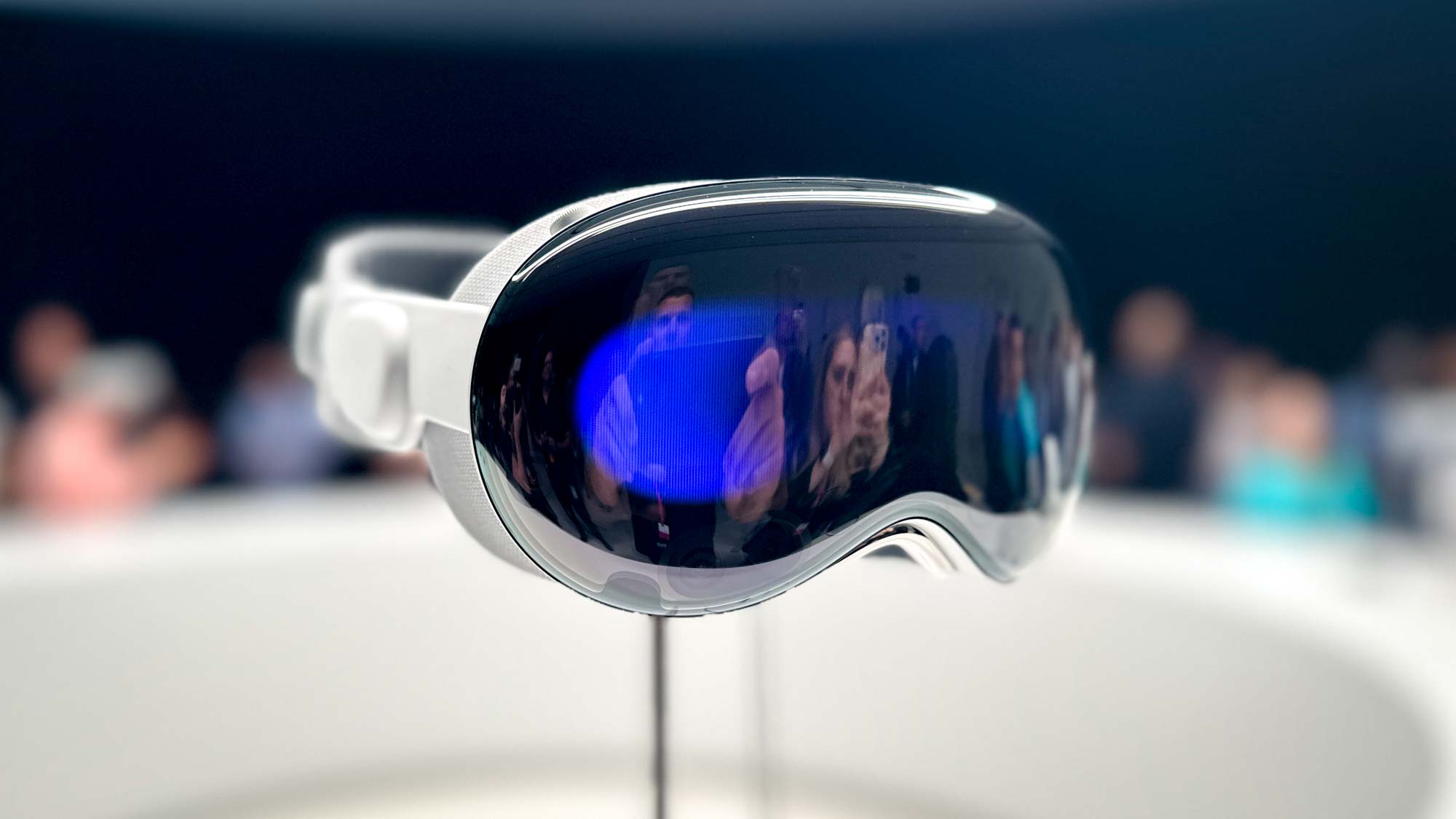Will 5G finally take off in 2020? Here's what the carriers and experts say
Here's what wireless carriers have planned for next year
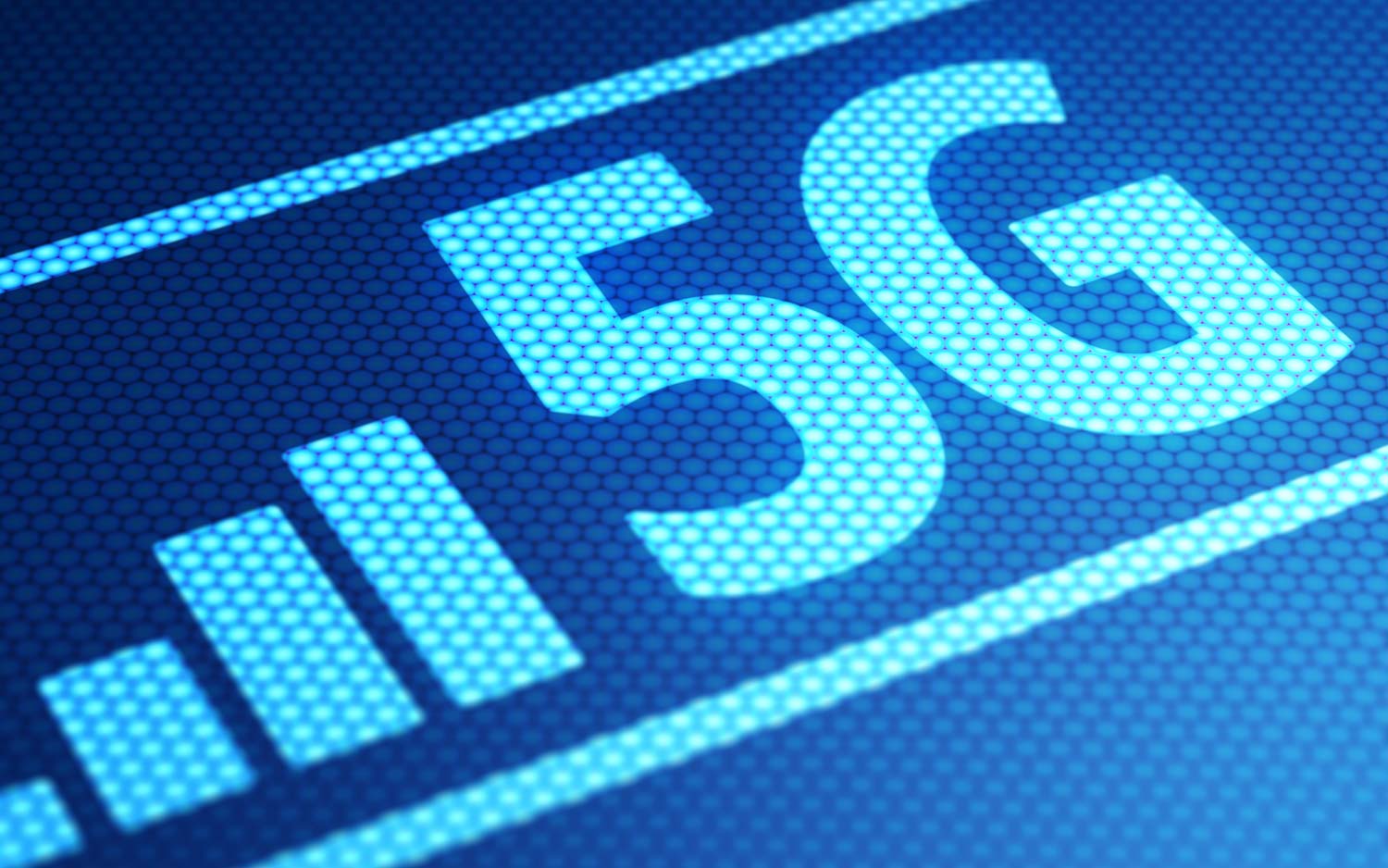
This was supposed to be the year of 5G. And if you run a wireless network or build the parts that are used in 5G phones and networks, it truly was. Consumers, though, can be forgiven if they feel like they're still waiting for the year of 5G to begin and wondering what the standard actually delivers.
"2019 was a foundational year for 5G, with network technologies being proven — millimeter wave actually works! — rollouts beginning and several devices shipping," said Avi Greengart, lead analyst for Techsponential. "If you've followed network transitions in the past, the move to 5G feels significantly faster than usual."
And what about consumers? "Nope. Nada. None," Greengart continued. "5G has had essentially no impact on consumers this year."
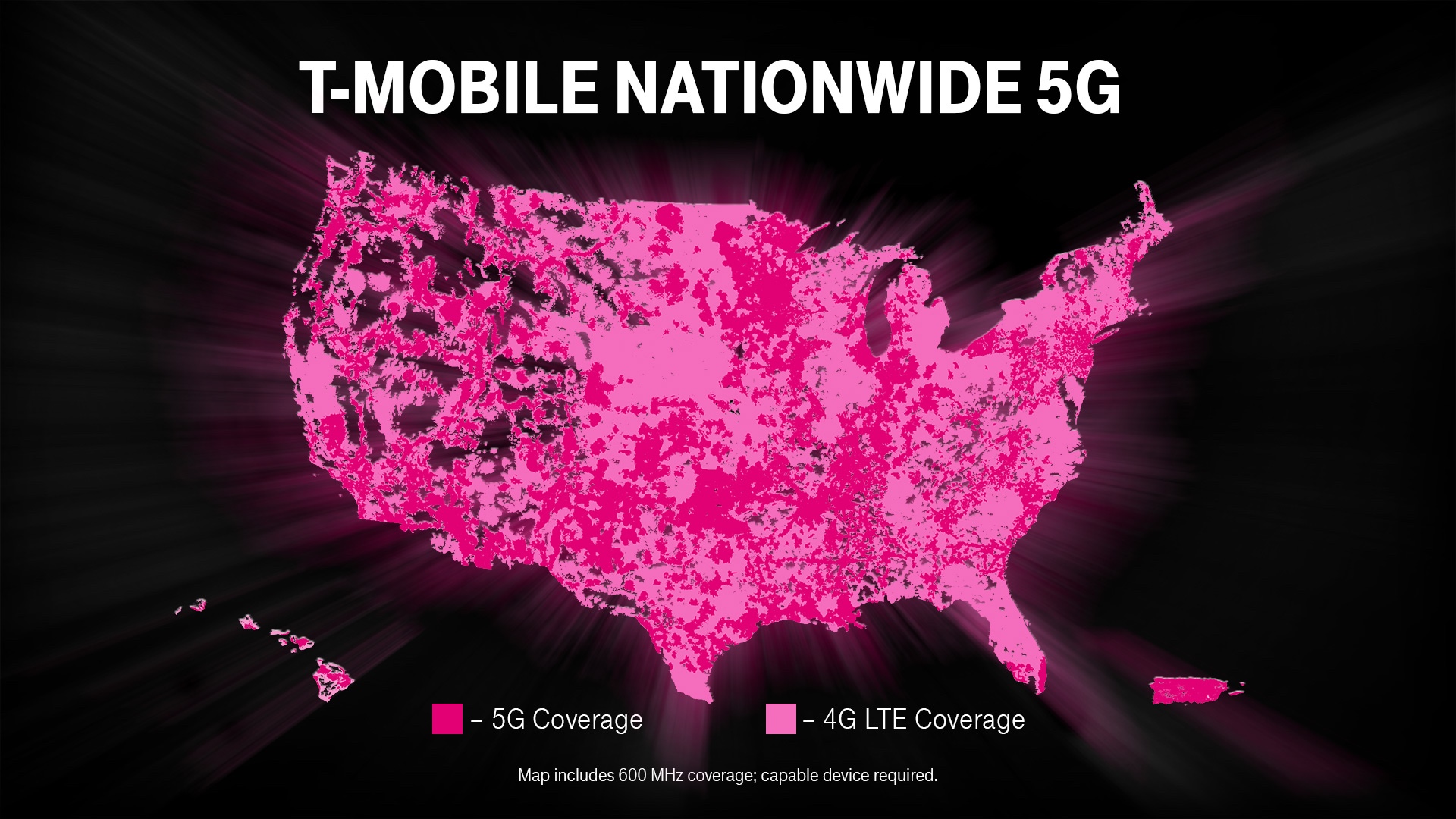
It's true that network operators in the U.S. have made big strides in launching 5G. The year began with Verizon turning on service in two cities, as every other Big Four carrier introduced 5G service to its customers. As the year ends, T-Mobile has launched a nationwide 5G network that reaches 5,000 cities and AT&T has followed suit in 10 cities with a more extensive 5G network of its own.
That's a lot of progress in just one year, but consumers can be forgiven for stifling yawns. Until T-Mobile's low-band 5G network came online in December, 5G coverage was limited to a handful of cities. Verizon's 5G service is currently live in 18 cities, followed by Sprint with 5G coverage in nine cities. AT&T offers its 5G Plus service in 21 cities, but that's limited to corporate customers. And only a half-dozen phones and a trio of mobile hotspots in the U.S. can take advantage of 5G's faster speeds.
"You might have gotten your first taste of 5G if you lived in the right area and ponied up for the right device," said Jason Leigh, research manager for mobility at market research firm IDC.
"We fully expect, from 2019 to 2020, to actually achieve mass adoption in 5G." — Ryan Sullivan, vice president of product engineering at Sprint
5G may yet to be a hit with consumers, but just getting the technology live in countries around the globe — in addition to the U.S., 5G networks are live in Australia, China, South Korea and Europe — is a big step forward. For starters, it helps network operators fine-tune their 5G coverage while encouraging device makers to produce more 5G-ready phones. The launch of the networks also gives developers and businesses a chance to see just how they'll take advantage of 5G features, such as faster speeds and lower latency.
Get instant access to breaking news, the hottest reviews, great deals and helpful tips.
"The important thing is to get the 5G signal out there so you can get people working on use cases," Leigh said. "A lof innovation comes when people can tinker with technology out in the wild."
And as 2019 draws to a close, wireless carriers, equipment makers and others are looking ahead to what the next year will bring. At last week's Qualcomm tech summit, where the chipmaker introduced a pair of new chipsets that will power 5G-ready smartphones slated to come out in the next year, Qualcomm President Cristiano Amon declared that "2020 will be the year of scale" for 5G, as carriers build out their networks to reach more consumers.
5G: The story so far
To understand where 5G networks are headed in the U.S., it's important to understand what the various wireless carriers have already built. And that means recognizing the different approaches each one is taking to bring 5G to customers.
On one end of the spectrum is millimeter-wave technology. This high-band spectrum can deliver the fast speeds that are commonly associated with 5G, though the signals don't travel very far and have a hard time with physical obstructions like walls, windows and buildings. For that reason, millimeter wave works best in dense, urban areas but isn't as suited to rural areas, where you want your coverage to extend a wider distance.
That's a trade-off Verizon has been willing to make, as Big Red has deployed mobile 5G in parts of 18 cities exclusively using millimeter-wave technology. Verizon isn't the only carrier that's used millimeter wave; T-Mobile uses that technology in the fast 5G networks the company built in a half-dozen cities, and millimeter wave is also at the heart of AT&T's 5G Plus service, which is available to corporate customers in 23 markets. But Verizon is unique for pouring most of its 5G efforts so far into millimeter wave.
"Right now, we're very focused on millimeter wave because of the massive bandwidth that you have, and the only way to get some of these transformational use cases off the ground is to have speed in the gigabit range," Nicki Palmer, Verizon's chief product development officer, said.
Indeed, we've certainly seen those speeds when we've tested Verizon's 5G networks in cities ranging from Chicago to Providence, Rhode Island. Get near a Verizon 5G tower, and you can see download speeds reach 1 Gbps, much faster than what you could ever hope to achieve on existing LTE networks. But critics would point out that those high speeds disappear once you move out of the tower's line of sight.
Riding the millimeter wave
That's also been the case with the other millimeter-wave-based networks we've tested, like AT&T's build in Las Vegas. AT&T has restricted this network, which it calls 5G Plus, to corporate customers, a decision that AT&T Senior Vice President of Mobility Kevin Petersen said will help improve 5G service as it rolls out to consumers.
"A lot of new technologies do start with the businesses that are thinking about deploying technology with very specific applications aimed at ... whether it's an opportunity, a challenge, something that will help them get to that next step," Petersen said. "As we're getting ready to roll out to consumers, [we're] better informed in terms of the promise of the technology, how it works, where it works, [in] what situations and conditions, and ultimately how you layer on top of it."
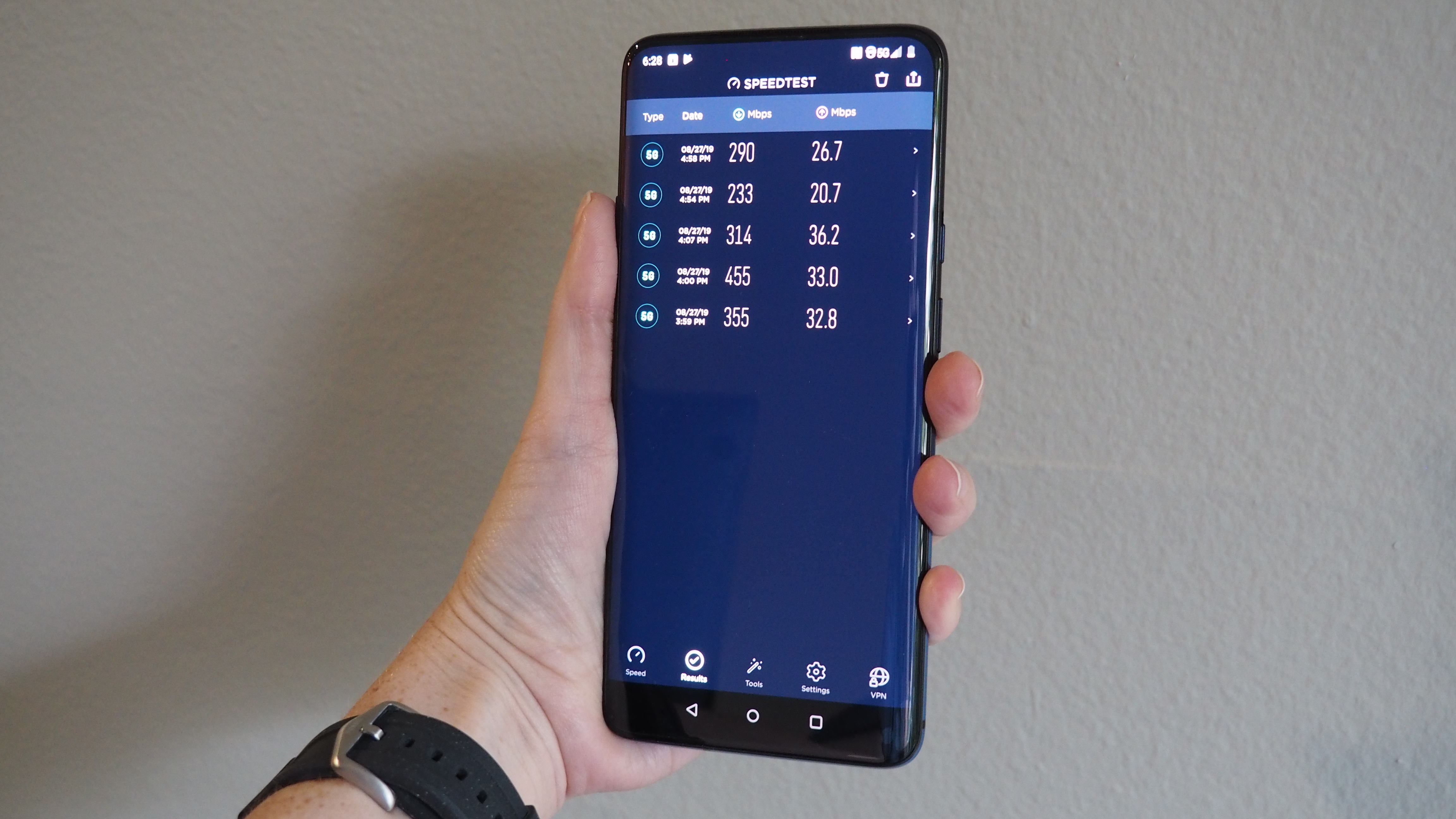
Sprint is the one carrier that hasn't turned to millimeter wave for its initial 5G network, which is available in nine cities as of this writing. Instead, the company used midband 2.5-GHz spectrum. As we discovered in tests in Dallas, Chicago and Los Angeles, that means speeds aren't as fast as what you get from millimeter wave — in some cases, Verizon's network was nearly 500 Mbps faster than Sprint's — but coverage is more consistent and applies to a wider area.
"We're not focused on millimeter-wave small-cell builds and a brand-new build, because we already have 2.5 GHz deployed nationwide for LTE," said Ryan Sullivan, Sprint's vice president of product engineering. "The markets that we chose to build these on, we didn't have to build a single site to actually implement [5G] and implement in a contiguous way."
As for T-Mobile, after launching millimeter-wave-based coverage in six cities earlier this year, the company has now unveiled a nationwide network that's built on the 600-MHz spectrum. That's low-band spectrum, so don't expect fast speeds. T-Mobile says to expect 5G speeds that are 20% faster than what you'd get from its own LTE network. And while we saw gains greater than that when we tested the Uncarrier's new network with a OnePlus 7T Pro 5G McLaren, we also saw speeds that weren't terribly faster than what LTE provides.
"When you put some of our competitors' initial efforts at 5G up against our 4G LTE network, side by side [in the] same location, our 4G LTE network is outperforming [them]," Verizon's Palmer said.
For T-Mobile, this new network isn't about speed, at least not initially, but about coverage. T-Mobile's 5G network reaches 5,000 cities and is accessible to 200 million people (assuming those people have 5G-compatible phones), and some of that coverage includes rural areas that won't see 5G, high-speed or otherwise, for some time.
Of course, the 5G network of the future won't require you to choose between high-, mid- and low-band spectrum. It will incorporate all three. "Real 5G is combination of sub-6 GHz and millimeter wave," Amon said during this month's Qualcomm event. "That's going to happen on a global scale."
And that will be the challenge network operators face in the coming year and beyond.
What's ahead for 5G
Of course, before that happens, the number of 5G-ready phones on the market will have to increase. As of this writing, eight handsets work with the 5G networks of assorted U.S. carriers, and that figure includes Motorola's last three Moto Z phones, which require a separate add-on to connect to 5G. Current 5G phones range in price from $840 for the OnePlus 7 Pro 5G at Sprint to the $1,299 you'll pay for the Galaxy S10 5G and Galaxy Note 10 Plus 5G at multiple carriers.
"The biggest driver for 5G in the US and Europe, on any network, will be when Apple launches a 5G iPhone." — Avi Greengart, lead analyst at Techsponential
T-Mobile says it will offer 15 new 5G-capable phones in 2020, and AT&T's Petersen says his carrier expects to feature the same amount.
"We fully expect, from 2019 to 2020, to actually achieve mass adoption in 5G. And that comes with a lot more devices out there that are 5G-connected which will be launching in 2020," Sprint's Sullivan said, "and more importantly, the highest-running devices out there in terms of sales volume in the U.S., what customers know and love, the global franchise products moving to 5G."
Techsponential's Greengart was more blunt: "The biggest driver for 5G in the U.S. and Europe, on any network, will be when Apple launches a 5G iPhone, because Apple drives enormous volumes, and that is when these new networks will start filling up with users." For what it's worth, iPhone 12 rumors suggest that Apple will have 5G-ready phones in the fall of 2020.
But don't expect carriers to wait around for Apple and others to roll out flagship 5G phones or to wait for phone makes to offer lower-priced 5G handsets that take advantage of Qualcomm's lower-cost Snapdragon 765 chipset, with integrated 5G modem. The carriers also have plans to build on what they launched in 2019.
Verizon: When we spoke to Palmer in December, she said she was confident that Verizon would meet its target of launching 5G in 30 cities by the end of 2019. So what's next after that?
"Thirty-one," she joked.
Expect more cities to join Verizon's 5G ranks in 2020, though the carrier hasn't disclosed how many cities or which ones just yet. "We'll see broader coverage in the areas that we're in and more venues [like NFL stadiums and sports arenas] as part of that," Palmer said.
Verizon also plans to turn to technologies like dynamic spectrum sharing (DSS) and network slicing as part of its efforts to fine-tune its 5G coverage. "The future allows us to put the right spectrum to the right use case," Palmer said. "That's part of what DSS does. So you're able to say, 'You want to download something massive, or you want to stream 4K video right now.' So we're going to put you on this spectrum. ... 'You, you're doing email over here. Why would I give you the bandwidth of millimeter wave? It's not useful to you. So you will maybe get a different band of spectrum.'"
AT&T: AT&T's next big 5G push just got underway, with the carrier launching a new 5G service built on low-band spectrum that will deliver more-extensive coverage, albeit at lower speeds. That service is now available in 10 cities, and AT&T has immediate plans to add six more in the near future. A nationwide rollout is expected in the first half of 2020.
As for its 5G Plus service built on millimeter wave, AT&T plans to expand that from the current 23 cities to 30 by early 2020.
"You need to see sustainable growth," Petersen said, when I asked him about AT&T's goals for the coming year. "And that sustainable growth comes in a few dimensions — the network deployed, the device ecosystem proliferating and the experiences on the consumer side. You're starting to see consumer applications contemplating or starting to optimize or leverage the benefits of 5G."
Sprint and T-Mobile: The 5G plans of these two carriers seem inextricably linked, especially since the companies hope to finally complete their merger in 2020. That will allow T-Mobile to incorporate Sprint's midband spectrum into its own 5G offering made up of both low-band and millimeter-wave deployments. "What you'll see is the first situation where a network operator has come to bear with its own spectrum that can create all three layers of the layer cake," Sprint's Sullivan said.
In the meantime, while T-Mobile concentrates on ts newly launched nationwide 5G network, Sprint will look to expand its own 5G efforts. That company has already built up coverage in the cities where it launched this summer, going from covering 11 million people at launch to more than 16 million people by year's end.
"We're not ready to announce our continued build plan and market-expansion plans yet for some obvious reasons that are out there," Sullivan said. "What we are outwardly focused on and can talk about is the transition that we fully expect to see from 2019 to 2020 to actually achieve mass adoption in 5G."
The outlook for 5G in 2020
Whether all those carrier efforts, combined with the launch of more 5G-ready phones, leads to any eye-opening moments for consumers remains to be seen. But 2020 sounds like it's shaping up to be another year when 5G becomes more established, though not necessarily transformational.
"In most cases, 5G in 2020 will mean slightly faster 4G," Greengart said. "In Korea and possibly China, we could see gaming-oriented 5G plans by the end of the year. We should start seeing some nonphone use cases for 5G next year, as well, with home broadband replacement having the highest profile."
IDC's Leigh agreed that extending 5G to services beyond mobile, like home broadband, could be on the table for 2020. He said he's also looking at the emergence of other types of 5G devices — think virtual reality goggles — and for the U.S. to free up more midband spectrum for operators.
The discussion around 5G right now is focusing on speeds, at least from a consumer perspective. But Leigh noted that 5G promises a full end-to-end network that should lead to lower latency, opening up far more use cases than just downloading movies off of Netflix faster. But many of those use cases will affect businesses and industry first, before extending to consumers.
What needs to emerge, Leigh suggested, was a Pokémon Go-like experience, referring to the 2016 app that popularized augmented reality-based apps for mobile devices, leading to an uptick in use. "5G use cases that benefit consumers are still a little bit of a mystery," he said.
Philip Michaels is a Managing Editor at Tom's Guide. He's been covering personal technology since 1999 and was in the building when Steve Jobs showed off the iPhone for the first time. He's been evaluating smartphones since that first iPhone debuted in 2007, and he's been following phone carriers and smartphone plans since 2015. He has strong opinions about Apple, the Oakland Athletics, old movies and proper butchery techniques. Follow him at @PhilipMichaels.
